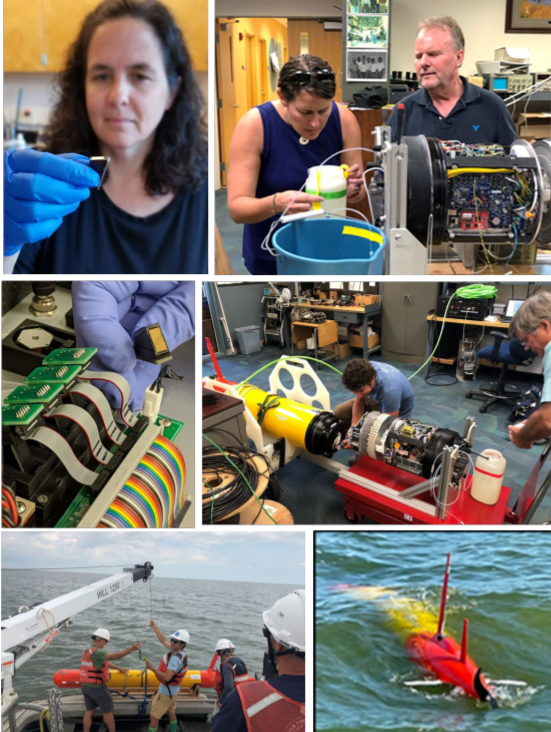
This August, NCCOS scientists and their partners achieved the first real-time toxicity assessment of an algal bloom in Lake Erie by an uncrewed subsurface vehicle. The Long-Range Autonomous Underwater Vehicle (LRAUV) deployed housed a third-generation Environmental Sample Processor (3G ESP) equipped with sensors developed by NCCOS that provided the first “on-the-fly” measurements of the algal toxin microcystin.
Discrete microcystin measurements by the 3G ESP/LRAUV system from August 4 to August 17 confirmed the relatively low toxicity of the bloom. Vessel-assisted water quality sampling, airborne hyperspectral imagery, and satellite imagery from NOAA’s Lake Erie HAB Bulletin provided critical paired validation data and information on bloom location, intensity, and trajectory, respectively.
In another first, NOAA personnel trained by Monterey Bay Aquarium Research Institute colleagues successfully piloted the underwater vehicle and adaptively executed bloom patch tracking and sampling during field operations. This milestone will significantly enhance NOAA’s uncrewed systems capabilities.
Additionally, partner researchers will use samples collected and preserved by the 3G ESP/LRAUV for post-deployment omics-based analyses of the bloom. This information, along with data from analysis of hand-collected samples, will improve the scientific community’s understanding of the factors that contribute to bloom toxicity in Lake Erie.
The project team includes scientists from NCCOS, NOAA’s Great Lakes Environmental Research Laboratory (GLERL), NOAA’s Atlantic Oceanographic and Meteorological Laboratory (AOML), the Monterey Bay Aquarium Research Institute (MBARI), and the Cooperative Institute for Great Lakes Research (CIGLR). The work was supported by NOAA’s Omics Initiative, as well as internal NOS/NCCOS operational funds.
